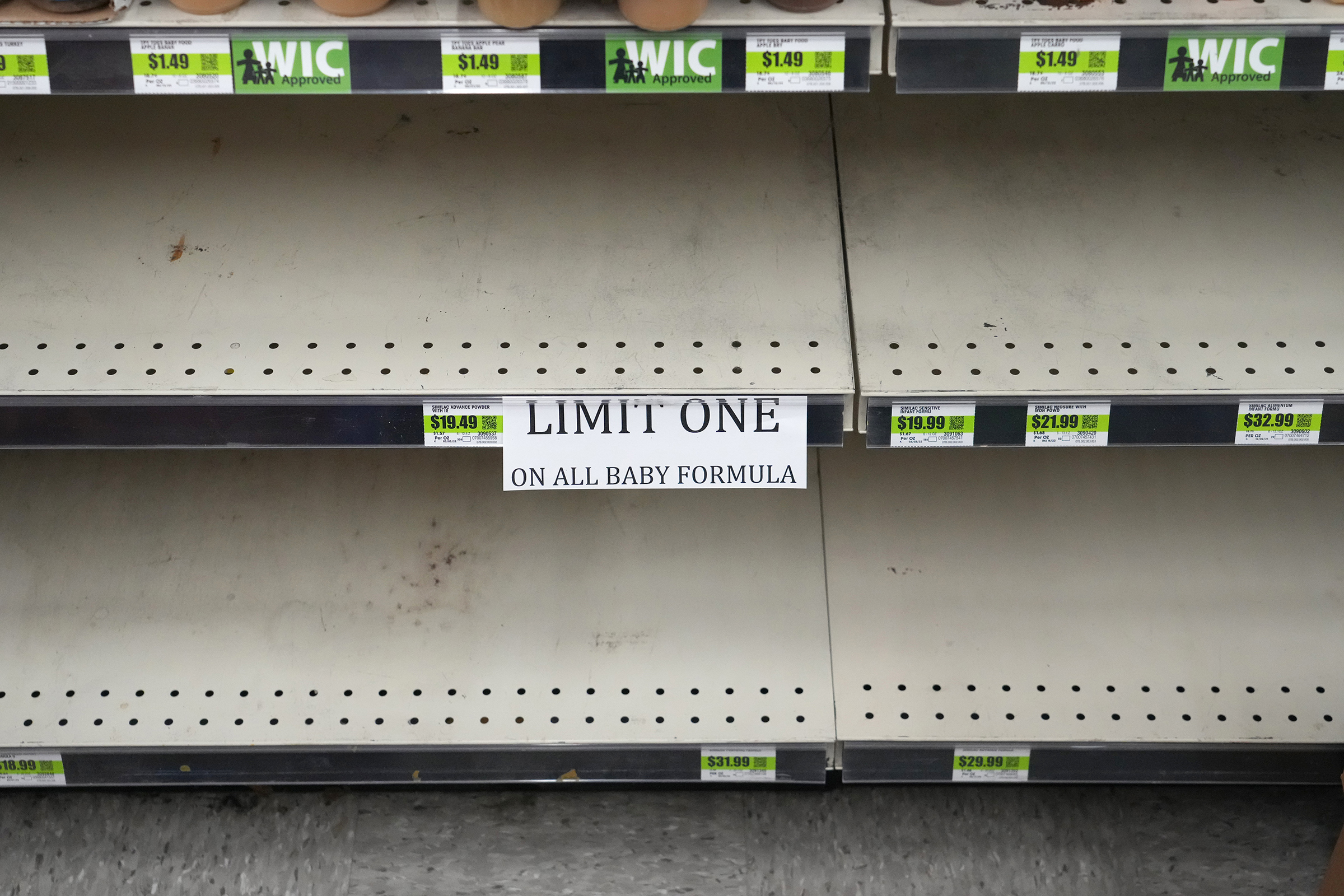
As families around the United States grapple with the infant formula shortage, some social media commentators have been asking: why don’t people just breastfeed? Isn’t that what everyone did before infant formula?
As a historian who studies the feeding of infants and children, I can tell you that breastfeeding has never been possible for everyone and people have always needed substitutes for breast milk. Not until the 20th century did alternative baby foods become reliable and nourishing, in the form of modern infant formula. Before that point, many families had to endure the agony of losing a baby to starvation, malnutrition, or related disease. Modern infant formula is a lifesaving marvel, not a luxury.
Read More: 5 Parents on the Stress of Trying to Feed Their Babies Amid a Nationwide Formula Shortage
Throughout American history, people have been unable to or chosen not to breastfeed for a variety of reasons. Maybe the birthing parent didn’t have enough supply, or the baby could not latch properly. Maybe the mother had died in childbirth or needed to go back to work. Maybe the baby had been adopted or needed to be cared for by someone else.
Sometimes other people would breastfeed the baby. Friends or relatives might pitch in. Rich families had wet nurses, who were either servants or enslaved. Wet-nursed children often died, but not as frequently as the babies of wet nurses, deprived of their mothers’ milk.
An even riskier alternative was bottle-feeding or spoon-feeding. Infants ate soft or liquid foods made from animal milk, broth, or grains. In the 17th and 18th centuries, these foods were homemade; by the late 19th century, industrially produced options became available.

But until the 20th century, babies who were not breastfed often died. Only rarely could alternative foods meet infants’ nutritional needs, leaving many malnourished. In the days before refrigeration, modern food safety, most vaccines, or antibiotics, thousands died of diarrhea brought on by tainted food.
Breastfeeding rates declined sharply around the turn of the 20th century and stayed low for decades. As the historian Jacqueline Wolf describes, early-20th-century pediatricians pushed scheduled feeding (as opposed to on-demand), which hampered breast-milk production, and other practices that made breastfeeding more challenging. Without workplace protections for nursing or the modern technology of pumping, women working outside the home had no choice but to bottle feed.
Read More: Washington Politicians Helped Create the Baby Formula Shortage. Can They Solve It?
During this same era, formula and baby-food companies advertised heavily to new parents, many of whom became convinced that formula was a more modern and scientific choice than breastfeeding. And, as the food industry became more regulated, alternative baby foods like modern formula did become safer and more nutritious than in the past. As a result, notes the historian Amy Bentley, most baby boomers ate commercial or homemade formula, not breast milk.
In the late 20th century, breastfeeding saw a renaissance in pediatrics, public health, and parenting. Now 84% of American newborns start out breastfeeding, but only 25.8% exclusively breastfeed until 6 months of age per CDC recommendations. Breastfeeding outcomes are heavily stratified by race and income; white and Asian babies breastfeed more than Black infants.
Although the U.S. has enshrined some protections for lactating workers, like workplace lactation rooms and insurance coverage of breast pumps, the lack of universal paid family leave still prevents some working parents from breastfeeding.
Read More: COVID-19 Is Making New Moms Feel Even More Pressure to Breastfeed
But even if the U.S. passed paid family leave and other policies to support parents, some families would still need or choose to use formula. Parents who need medications incompatible with breastfeeding. Adoptive or foster families. Kids with specific nutritional or allergy needs. Parents who just don’t want to breastfeed.
In the absence of modern infant formula, infants used to starve or die of disease from inadequate food. We are fortunate to live in an era where parents have multiple safe options for feeding their babies, but when these options become limited, as they are now, it is indeed a crisis. We do not want to return to the past.
More Must-Reads from TIME
- How Donald Trump Won
- The Best Inventions of 2024
- Why Sleep Is the Key to Living Longer
- Robert Zemeckis Just Wants to Move You
- How to Break 8 Toxic Communication Habits
- Nicola Coughlan Bet on Herself—And Won
- Why Vinegar Is So Good for You
- Meet TIME's Newest Class of Next Generation Leaders
Contact us at letters@time.com